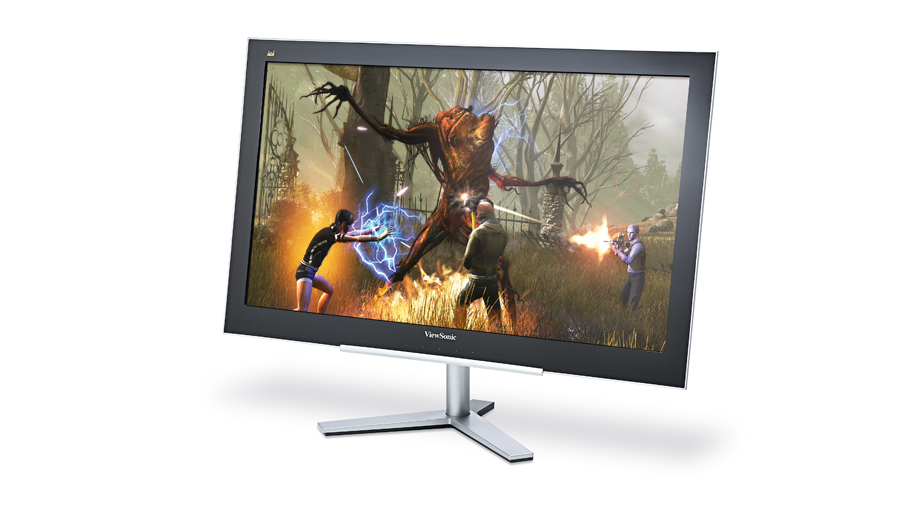TechRadar Verdict
Pros
- +
Decent image quality
- +
Ultra-thin design
- +
Consistent backlight
Cons
- -
No DVI connections
- -
Poor viewing angles
- -
Colour accuracy
Why you can trust TechRadar
Any 24-inch monitor for under £150 was considered a bona fide barrel scraper not that long ago. But things are different now and this ViewSonic screen finds itself pitched against some relatively stiff competition.
The first surprise is that it sports TN technology for its LCD panel. IPS panels, which are generally superior, are now available for under £150 in the 23 to 24-inch segment. On the other hand, the ViewSonic also sports an LED backlight. That in itself is nothing special. But it does allow ViewSonic to cook up an ultra-slim chassis measuring just 6.8mm thick.
That doesn't actually do anything for image quality, of course, but looks do matter and there are all sorts of reasons why you might want a cheap but seriously slick-looking screen.
However, for anyone who prizes image quality above all else, comparisons with the likes of ViewSonic's own IPS-powered VX2336s-LED or the AOC i2352Vh, both of which are cheaper, are likely to be uncomfortable.
Svelte ViewSonic
What you make of the slim-line ViewSonic will depend on your priorities. The specs of the tech that produce the actual images, for instance, are pretty pedestrian.
We're talking 24 inches of TN panel and a native resolution of 1,920 x 1,080 pixels and, therefore, a 16:9 aspect ratio. The pixel response is quoted at 5ms, which is unexciting for a TN screen, and the contrast comes in at an industry standard 1,000:1 and the white-light LED is good enough for 250cd/m2.
None of this is remotely dramatic. However, the thickness of the chassis is. But therein lies a problem. Ultra-slim HDTVs are cool because you can hang them on a wall and really wallow in the thinness. But a PC monitor? On a stand? And a tilt-only one at that? Not so much.
Even if you wanted to mount the screen on the wall, there's a box of gubbins on the bottom that prevents a properly flush wall fitting.
As for image quality, well, the ViewSonic screen is capable of visuals towards the top-end of the TN tree. The colours are vibrant and the contrast and black levels much better than TN panels of just a few years ago. The backlight is even and consistent, too, and the pixel response is nice and snappy. So the only major drawback is the viewing angles, which still give the TN game away.
Strictly speaking, the colour accuracy isn't that great, so not good for graphics pros. But that's not an issue for most home users or gamers. With IPS panels being available for similar money, swapping IPS technology for the dubious benefits of having an ultra-slim chassis is a raw deal to us. We're not crazy about the lack of DVI connectivity, either, given that AMD graphics cards still don't play nicely with HDMI connections.
All other things being equal though, we've no objection to slimmer chassis. At this price point, it's unusual to have a cheap screen that doesn't look budget. As TN panels go, this ViewSonic monitor is a very decent effort, in part thanks to that LED backlight.
Technology and cars. Increasingly the twain shall meet. Which is handy, because Jeremy (Twitter) is addicted to both. Long-time tech journalist, former editor of iCar magazine and incumbent car guru for T3 magazine, Jeremy reckons in-car technology is about to go thermonuclear. No, not exploding cars. That would be silly. And dangerous. But rather an explosive period of unprecedented innovation. Enjoy the ride.
